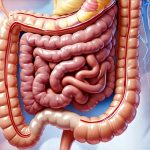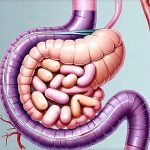The intricate relationship between our gut microbiome and overall health is becoming increasingly recognized as fundamental to well-being. For many years, we viewed bacteria primarily as potential threats, focusing on eliminating them with antibiotics and antibacterial products. Now, we’re learning that a diverse and balanced community of microorganisms within the digestive tract—our gut microbiome—is essential for everything from immune function and nutrient absorption to mental health and even allergy management. When this delicate ecosystem is disrupted, resulting in gut dysbiosis, it can trigger a cascade of effects extending far beyond digestive issues, potentially leading to heightened histamine levels and increased sensitivity to allergens. This article will explore the complex connection between gut health, histamine intolerance, and allergic reactions, aiming to provide a comprehensive understanding of these interwoven systems.
The implications of an imbalanced microbiome are vast and often surprising. It’s not simply about having ‘good’ or ‘bad’ bacteria; it’s about the balance between them and the overall diversity within the gut community. A healthy gut acts as a crucial barrier, regulating what enters our bloodstream and influencing immune responses. When this balance is compromised—through factors like poor diet, chronic stress, antibiotic use, or environmental toxins—the permeability of the intestinal lining can increase, often referred to as ‘leaky gut’. This allows undigested food particles, bacterial components, and other substances to enter circulation, potentially triggering inflammation and immune activation. These disruptions directly impact histamine metabolism and contribute to allergic sensitivities in profound ways. If you experience issues with this, it is worth exploring why indigestion can affect appetite.
The Gut-Histamine Connection: A Deeper Dive
Histamine is a powerful chemical messenger involved in numerous bodily functions, including immune response, digestion, neurotransmission, and even sleep-wake cycles. It’s naturally produced within the body but can also be ingested through food (fermented foods, aged cheeses, wine). Normally, histamine levels are tightly regulated by two key enzymes: histamine N-acetyltransferase (HNMT), found primarily in the gut, and diamine oxidase (DAO), present in various tissues including the intestines. Gut dysbiosis can significantly impair both of these systems, leading to a buildup of histamine – what is often termed ‘histamine intolerance’.
A compromised microbiome directly impacts DAO production and function. Certain beneficial bacteria actively support DAO synthesis, while others contribute to histamine breakdown. When the gut’s microbial balance is disrupted, the population of these helpful bacteria diminishes, reducing DAO activity and hindering the body’s ability to neutralize ingested or internally produced histamine. Furthermore, increased intestinal permeability associated with dysbiosis allows more histamine-releasing substances to enter circulation, overwhelming the existing DAO capacity. This creates a vicious cycle where inflammation further damages the gut lining, exacerbating both dysbiosis and histamine intolerance. Understanding how disrupted gut motility can also contribute to these issues is important for overall health.
The consequences of elevated histamine levels are far-reaching and can manifest in diverse symptoms that mimic allergic reactions: hives, flushing, headaches, digestive upset (diarrhea, bloating), nasal congestion, anxiety, and even irregular heartbeat. Importantly, these symptoms aren’t necessarily indicative of a true IgE mediated allergy—the type tested for with traditional allergy testing—but rather a result of the body’s inability to efficiently process histamine. This is why histamine intolerance is often referred to as a ‘pseudo-allergy’. Identifying and addressing gut dysbiosis, therefore, becomes crucial in managing these symptoms and restoring balance. It is also important to know how dehydration can cause similar issues like nausea and cramping.
The Allergic Sensitivity Link: How Dysbiosis Fuels Reactions
Allergies occur when the immune system overreacts to harmless substances (allergens) like pollen, food proteins, or dust mites. While genetics play a role, the environment – particularly the gut microbiome – significantly influences allergic development and sensitivity. A healthy gut microbiome is crucial for “training” the immune system to distinguish between friend and foe. Early exposure to diverse microbes helps develop immune tolerance—the ability to recognize harmless substances as non-threatening.
Gut dysbiosis disrupts this process, leading to an impaired immune response and increased susceptibility to allergies. When the gut barrier is compromised, allergens can more easily cross into circulation, triggering a stronger immune reaction. Furthermore, certain bacterial imbalances are linked to specific allergic conditions. For example, reduced microbial diversity in infancy has been associated with a higher risk of developing food allergies and eczema later in life. Conversely, a robust microbiome promotes the production of short-chain fatty acids (SCFAs), which have anti-inflammatory properties and help regulate immune function.
The interplay between histamine and allergy is also significant. Histamine itself plays a role in allergic reactions, causing many of the typical symptoms like itching, swelling, and inflammation. In individuals with gut dysbiosis and histamine intolerance, even small amounts of allergens can trigger a disproportionately strong reaction due to the body’s inability to effectively manage histamine release. This explains why some people experience severe allergy-like symptoms despite negative allergy tests – they may be reacting not to IgE antibodies but to histamine overload. It’s also worth considering if gut inflammation might contribute to these reactions.
Restoring Gut Health: Strategies for Balance
Addressing gut dysbiosis is a multifaceted process that requires a holistic approach, focusing on dietary changes, lifestyle modifications, and potentially targeted supplementation. It’s important to remember that there’s no one-size-fits-all solution, as the specific interventions will depend on the individual’s unique microbiome profile and underlying issues.
-
Dietary Modifications: A cornerstone of gut health restoration is adopting a diet that nourishes beneficial bacteria while minimizing inflammatory foods. This typically involves:
- Increasing fiber intake from diverse sources (fruits, vegetables, whole grains) – fiber serves as food for the microbiome.
- Incorporating fermented foods rich in probiotics (yogurt, kefir, sauerkraut, kimchi) – these introduce live beneficial bacteria into the gut.
- Reducing sugar and processed foods – these can feed harmful bacteria and contribute to inflammation.
- Identifying and eliminating food sensitivities – this reduces immune activation and allows the gut to heal. A low histamine diet may also be considered temporarily.
-
Lifestyle Adjustments: Stress management is crucial, as chronic stress negatively impacts the microbiome. Techniques like meditation, yoga, or deep breathing exercises can help reduce cortisol levels and support a healthier gut environment. Adequate sleep (7-9 hours per night) is also essential for immune function and microbial balance. Regular exercise promotes gut motility and reduces inflammation.
-
Targeted Supplementation: In some cases, supplementation may be beneficial to address specific deficiencies or imbalances.
- Probiotics: While not always necessary, a well-chosen probiotic supplement can help repopulate the gut with beneficial bacteria. It’s important to select strains appropriate for your individual needs and consider working with a healthcare professional.
- Prebiotics: These are non-digestible fibers that feed existing beneficial bacteria in the gut. Examples include inulin, fructooligosaccharides (FOS), and galactooligosaccharides (GOS).
- L-glutamine: An amino acid that helps repair the intestinal lining and reduce inflammation.
- Digestive Enzymes: May aid digestion and reduce undigested food particles entering circulation.
The Role of Specific Bacteria in Histamine Metabolism
Certain bacterial species play a crucial role in histamine regulation, and their presence (or absence) can significantly impact histamine levels. Bifidobacterium bifidum and certain strains of Lactobacillus are known to express DAO, contributing to histamine breakdown within the gut. Conversely, some bacteria, such as Klebsiella, can actually produce histamine, exacerbating intolerance symptoms.
Understanding these microbial interactions is essential for tailoring interventions. For instance, if a microbiome analysis reveals a deficiency in DAO-producing bacteria, supplementation with probiotics containing those specific strains may be beneficial. However, it’s crucial to avoid indiscriminate probiotic use, as introducing the wrong bacteria can further disrupt the gut ecosystem. A comprehensive stool test can provide valuable insights into your individual microbial composition and guide targeted interventions. In some cases, changes in location could also play a role – traveling south can cause temporary gut changes that affect histamine levels.
Beyond Diet & Supplements: Addressing Leaky Gut
‘Leaky gut’, or increased intestinal permeability, is a central component of both histamine intolerance and allergic sensitivities. As mentioned earlier, it allows undigested food particles, toxins, and bacterial components to enter circulation, triggering inflammation and immune activation. Simply addressing the microbiome isn’t always enough; repairing the gut lining is also vital for long-term health.
Strategies to improve intestinal barrier function include:
* Reducing inflammatory foods: As outlined above, minimizing sugar, processed foods, and food sensitivities reduces overall inflammation and supports healing.
* Supplementing with gut-healing nutrients: L-glutamine, zinc carnosine, and collagen peptides can help repair the intestinal lining.
* Managing stress: Chronic stress increases intestinal permeability; therefore, incorporating stress management techniques is crucial.
* Avoiding NSAIDs & other medications that damage the gut lining: Long-term use of these medications can contribute to leaky gut.
Ultimately, restoring gut health and managing histamine intolerance requires a personalized approach that addresses the underlying causes and supports the body’s natural healing mechanisms. It’s important to work with a healthcare professional who understands the intricacies of the microbiome and can guide you towards effective interventions tailored to your individual needs. Sometimes this is directly related to when we eat – late-night eating can contribute to gut imbalances that affect histamine levels. And of course, understanding how disrupted gut motility can lead to nausea is an important piece of the puzzle too.


















